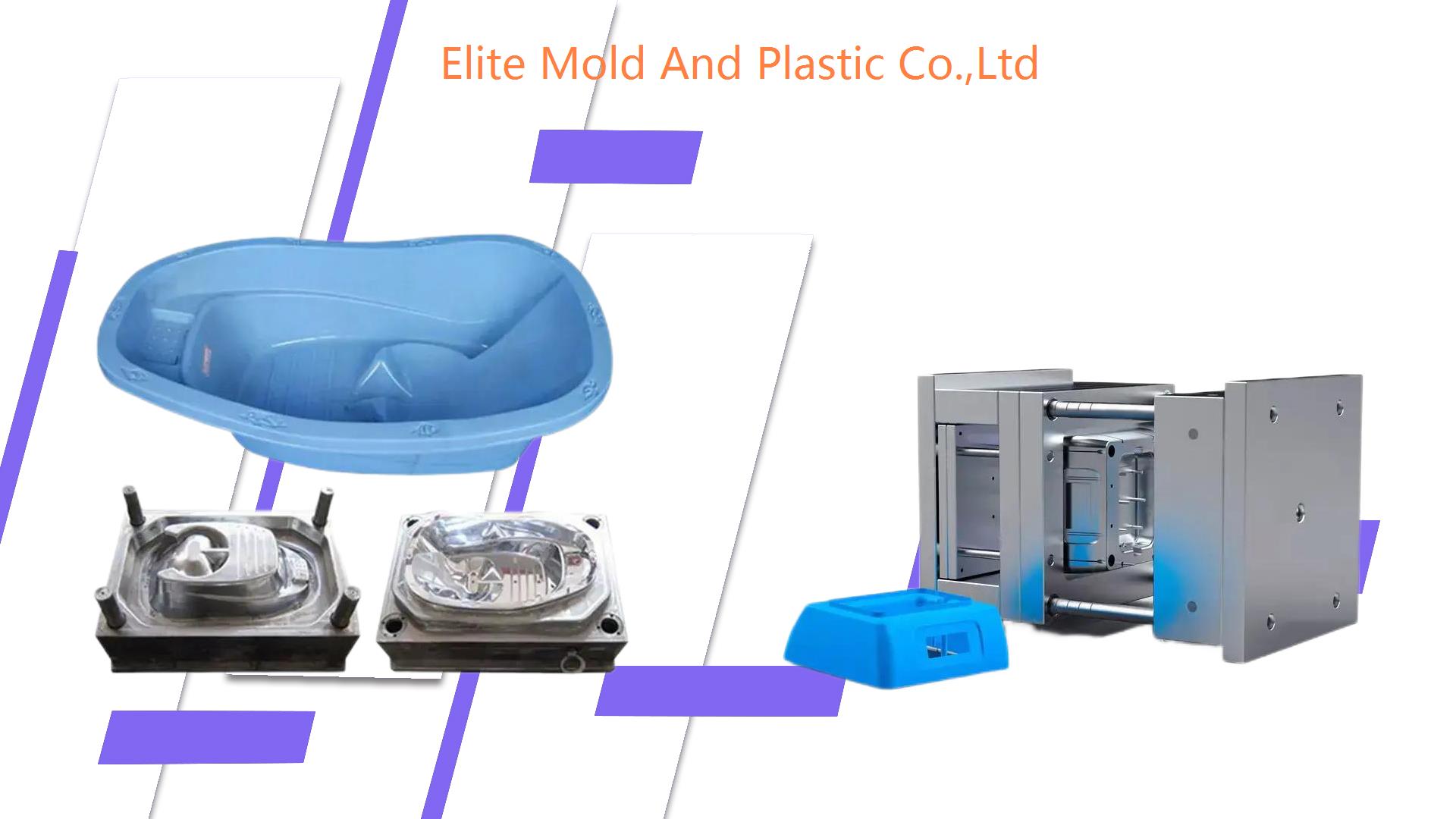How Mold Flow Analysis Improves Plastic Part Design and Reduces Defect
As a leading plastic injection mold manufacturer in China, Elite is dedicated to producing high-quality plastic injection molds and molded parts with a focus on precision and efficiency. One of the most powerful tools we use to achieve these results is mold flow analysis. This advanced technology allows us to simulate the flow of molten plastic within a mold, predicting how the material will behave during the injection process. Mold flow analysis plays a crucial role in improving plastic part design, optimizing production processes, and reducing the likelihood of defects. In this article, we will explore how mold flow analysis enhances plastic part design and minimizes defects.
What is Mold Flow Analysis?
Mold flow analysis is a computer-aided engineering (CAE) simulation process that allows engineers to visualize and analyze how molten plastic will flow into a mold cavity during the injection molding process. It helps predict potential issues such as air traps, warpage, sink marks, and other defects before actual mold production begins.
By using mold flow analysis, manufacturers like Elite can optimize the design of the mold and injection process parameters, ensuring higher quality parts and a more efficient production process.
Key Benefits of Mold Flow Analysis
- Predicts potential defects: Identifies issues before mold production begins, reducing costly trial-and-error testing.
- Improves material flow: Ensures that the plastic fills the mold cavity evenly, avoiding common defects.
- Reduces production time and cost: By optimizing the design upfront, mold flow analysis helps reduce cycle times and minimizes material waste.
- Enhances part quality: Provides insights that lead to improved part durability, accuracy, and finish.

How Mold Flow Analysis Improves Plastic Part Design
Mold flow analysis offers significant advantages when it comes to refining the design of plastic parts. By providing valuable insights during the early stages of mold design, it allows for design adjustments that result in better part performance and higher quality.
1. Optimizing Gate Placement
One of the critical factors influencing the quality of a molded part is the location of the gate, where molten plastic enters the mold. Incorrect gate placement can lead to uneven filling, trapped air, or visible flow lines on the surface of the part.
How Mold Flow Analysis Helps Gate Placement
- Even Material Distribution: Mold flow analysis can simulate how the plastic will fill the cavity and highlight areas where material distribution may be uneven. By adjusting the gate placement, the flow can be optimized to fill the mold uniformly.
- Minimizing Defects: Proper gate placement reduces the likelihood of common defects like short shots, weld lines, or burn marks.
- Enhancing Surface Quality: Well-placed gates minimize cosmetic defects, ensuring a smooth surface finish.
At Elite, we use mold flow analysis to determine the best gate locations for each part, ensuring optimal material flow and part quality.
2. Optimizing Wall Thickness
Wall thickness has a significant impact on part strength, material usage, and cycle times. Thick walls may lead to warping or sink marks, while thin walls may result in incomplete filling or weakened parts.
How Mold Flow Analysis Improves Wall Thickness
- Preventing Sink Marks: Mold flow analysis identifies areas where thicker sections of the part may cool at different rates, leading to sink marks. Adjusting the design to balance wall thickness can prevent these issues.
- Optimizing Cycle Time: Thicker walls require longer cooling times, which can slow down production. Mold flow analysis helps designers find the ideal wall thickness that balances strength and production efficiency.
- Enhancing Part Strength: By analyzing how different wall thicknesses affect material flow and cooling, designers can make informed decisions to improve part strength and durability.
Elite uses mold flow analysis to ensure that parts are designed with optimal wall thicknesses, reducing the risk of defects and maximizing efficiency.
3. Predicting and Reducing Warpage
Warpage occurs when different areas of a part cool and solidify at different rates, causing the part to bend or distort. Mold flow analysis helps identify areas where warpage is likely to occur and provides insights into how to reduce it.
How Mold Flow Analysis Reduces Warpage
- Cooling System Optimization: Mold flow analysis allows engineers to visualize how cooling channels affect the solidification of the part. By designing an optimal cooling system, the mold ensures even cooling and reduces the likelihood of warpage.
- Balanced Flow: Uneven flow of plastic can also contribute to warping. Mold flow analysis helps ensure that the molten plastic flows uniformly throughout the mold, reducing internal stresses that lead to warping.
- Material Behavior: Different materials behave differently during cooling. Mold flow analysis takes material properties into account, helping designers choose the right material for the application to minimize warpage.
At Elite, we use mold flow analysis to anticipate and prevent warpage, ensuring that the final parts are dimensionally accurate and free of distortions.
4. Minimizing Weld Lines
Weld lines, also known as knit lines, occur when two flow fronts of molten plastic meet during the filling process. These lines can weaken the part and create cosmetic imperfections.
How Mold Flow Analysis Minimizes Weld Lines
- Flow Path Optimization: Mold flow analysis shows where flow fronts will meet and form weld lines. By adjusting gate locations or modifying the part design, engineers can reposition weld lines to less critical areas or minimize their occurrence.
- Reducing Stress Points: Mold flow analysis helps identify areas where weld lines may create weak spots. By modifying the design, engineers can reduce the mechanical stress at these points, resulting in stronger, more reliable parts.
- Enhancing Aesthetics: By repositioning weld lines, designers can improve the surface appearance of the part, eliminating visible defects.
Elite uses mold flow analysis to optimize part design and mold layout, ensuring weld lines are minimized and parts meet both structural and aesthetic requirements.
5. Optimizing Cooling Time
The cooling phase of the injection molding cycle has a major impact on both part quality and production efficiency. Uneven cooling can lead to warping, shrinkage, and longer cycle times.
How Mold Flow Analysis Optimizes Cooling
- Efficient Cooling Channel Design: Mold flow analysis simulates how heat dissipates during the cooling process. This allows engineers to design optimized cooling channels that promote uniform cooling throughout the part.
- Shortening Cycle Times: By identifying areas that cool slowly, mold flow analysis enables designers to make adjustments that reduce cooling time without sacrificing part quality. Faster cooling means shorter cycle times and higher production efficiency.
- Preventing Dimensional Changes: Uneven cooling can cause dimensional inaccuracies as the part solidifies. Mold flow analysis helps ensure that parts retain their intended shape and dimensions during the cooling phase.
At Elite, we use mold flow analysis to fine-tune cooling system designs, ensuring faster production cycles and high-quality parts.
How Mold Flow Analysis Reduces Defects in Injection Molding
By simulating the entire injection molding process, mold flow analysis helps identify potential issues before production begins, allowing for design improvements that reduce defects.
Common Defects Addressed by Mold Flow Analysis
- Short Shots: Incomplete filling of the mold can lead to parts that are missing material. Mold flow analysis helps identify areas where short shots may occur and provides solutions such as adjusting gate placement or injection pressure.
- Air Traps: Air trapped in the mold cavity can cause burn marks or voids in the finished part. Mold flow analysis highlights areas where air may become trapped, allowing designers to add venting or reposition gates.
- Sink Marks: Sink marks occur when thicker areas of the part cool more slowly, causing depressions. Mold flow analysis helps optimize wall thickness and cooling times to prevent sink marks.
At Elite, we leverage mold flow analysis to address these and other common defects, ensuring that our clients receive high-quality, defect-free parts.
Conclusion
Mold flow analysis is a powerful tool that enhances plastic part design, optimizes the injection molding process, and reduces defects. By simulating material flow, cooling behavior, and part performance, mold flow analysis allows manufacturers like Elite to produce high-quality plastic parts with greater efficiency and precision.
At Elite, we integrate mold flow analysis into our design and production processes to deliver top-quality injection molds and molded parts at competitive prices. Contact Elite today to learn more about how mold flow analysis can improve your plastic part design and reduce defects in your next project!
Related news
Our Certificates
By co-operating with Elite Mold, you have selected one of the most reliable ISO 9001 certified plastic mold manufacturer, Elite Mold as a plastic injection mold manufacturer specializing in plastic injection mold and supplying plastic injection molding services for plastic mold design, prototype makings, mold flow analysis, precise machining, OEM services, ODM services and so on, building custom plastic injection molding. We are committed to enhance the Process optimized and quality of service, shorten lead time and assist in lowering inventory, by providing new products every year to bring in continuous and higher profits for our clients. The ability to produce mold at the International standard, strong engineering and mold design capability, aggressive delivery, competitive pricing and business integrity continues to be the success factor of Elite Mold.










